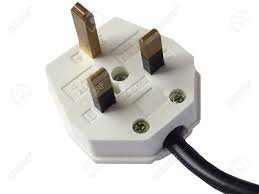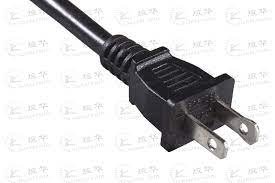warrior047
Member
Hello all,
I have to install the AV equipment ASAP and need to have some fool proof solution at the earliest. I am from Hyderabad, Telangana, India.
I have gone through multiple threads and got some idea. Based on that proposing few options as below for your valuable guidance.
My new AV Gear:
Monitor Audio Silver 5.1 System customized
Sub - yet to buy (Thinking of Rel HT once i have some bucks)
Denon X4700H - power consupmtion says 710 W
Current Power protection i have:
An 5 year old Amaron Pure Sine wave Hi backup UPS 880 VA capacity helping currently with my computer, lights and fans and guess this wont suffice my AVR
My current power flow as below for TV, Computer, Old Soundbar (Not the above AV Gear which is yet to be installed)
MAINS -> UPS -> 6A Belkin Surge protector
Query:
In my place where i need to install this, I have a facility of 16A for a stabilizer. Am really confused with all the options. Pls suggest what i need to do out of below:
1. Some suggested Online UPS as the best solution to have direct mains power that is crucial to AVR. If so, is it something i can buy only for AVR and TV? 1KVA is sufficient?
2. I also read to use Servo stabilizer. Is this different from normal TV stabilizer? Can i use normal TV Stabilizer of higher capacity for AVR and TV alone? If servo is different, what should i use? Will it impact the sound quality and reduce AVR performance over long run as many claimed?
3. Some suggested Main line stabilizer. Dont know as i use respective Belkin power surge protectors (Regularly) for all needs so far except TV, speakers alone - Is mainline stabilizer really needed?
4. Some other vendor recommended Power conditioner. Its also expensive. Am not sure if that alone helps with my AVR? Dont want to try this option as it seems
What is the best solution you might advise? At my place, i have decent sudden power cuts, voltage fluctuations etc.,
Option 1 - MAINS -> New Online UPS -> AVR & TV (Dont prefer due to noise issues if its ok)
Option 2 - MAINS -> Current 880 VA Pure sine wave UPS -> Current 6A Belkin Surge protector -> AVR & TV
Option 3 - MAINS -> Current 880 VA Pure sine wave UPS -> New 16A Regular TV 2 KVA Stabilizer (Krykard 3 KVA Servo Stabalizer or anything) -> AVR & TV
Option 4 - MAINS -> New 4 KVA Pure Sine Wave UPS -> 6A Belkin Surge protector -> AVR & TV
Option 5 - MAINS -> New 4 KVA Pure Sine Wave UPS -> New 16A Regular TV 3 KVA Stabilizer -> AVR & TV
Option 6 - MAINS -> New 4 KVA Pure Sine Wave UPS -> Direct power to AVR
Option 7 - MAINS -> New 16A Regular TV 2 KVA Stabilizer (Krykard 3 KVA Servo Stabalizer or anything else) -> AVR & TV
Sorry for the long thread but am not that technical person when it comes to power needs.
I have to install the AV equipment ASAP and need to have some fool proof solution at the earliest. I am from Hyderabad, Telangana, India.
I have gone through multiple threads and got some idea. Based on that proposing few options as below for your valuable guidance.
My new AV Gear:
Monitor Audio Silver 5.1 System customized
Sub - yet to buy (Thinking of Rel HT once i have some bucks)
Denon X4700H - power consupmtion says 710 W
Current Power protection i have:
An 5 year old Amaron Pure Sine wave Hi backup UPS 880 VA capacity helping currently with my computer, lights and fans and guess this wont suffice my AVR
My current power flow as below for TV, Computer, Old Soundbar (Not the above AV Gear which is yet to be installed)
MAINS -> UPS -> 6A Belkin Surge protector
Query:
In my place where i need to install this, I have a facility of 16A for a stabilizer. Am really confused with all the options. Pls suggest what i need to do out of below:
1. Some suggested Online UPS as the best solution to have direct mains power that is crucial to AVR. If so, is it something i can buy only for AVR and TV? 1KVA is sufficient?
2. I also read to use Servo stabilizer. Is this different from normal TV stabilizer? Can i use normal TV Stabilizer of higher capacity for AVR and TV alone? If servo is different, what should i use? Will it impact the sound quality and reduce AVR performance over long run as many claimed?
3. Some suggested Main line stabilizer. Dont know as i use respective Belkin power surge protectors (Regularly) for all needs so far except TV, speakers alone - Is mainline stabilizer really needed?
4. Some other vendor recommended Power conditioner. Its also expensive. Am not sure if that alone helps with my AVR? Dont want to try this option as it seems
What is the best solution you might advise? At my place, i have decent sudden power cuts, voltage fluctuations etc.,
Option 1 - MAINS -> New Online UPS -> AVR & TV (Dont prefer due to noise issues if its ok)
Option 2 - MAINS -> Current 880 VA Pure sine wave UPS -> Current 6A Belkin Surge protector -> AVR & TV
Option 3 - MAINS -> Current 880 VA Pure sine wave UPS -> New 16A Regular TV 2 KVA Stabilizer (Krykard 3 KVA Servo Stabalizer or anything) -> AVR & TV
Option 4 - MAINS -> New 4 KVA Pure Sine Wave UPS -> 6A Belkin Surge protector -> AVR & TV
Option 5 - MAINS -> New 4 KVA Pure Sine Wave UPS -> New 16A Regular TV 3 KVA Stabilizer -> AVR & TV
Option 6 - MAINS -> New 4 KVA Pure Sine Wave UPS -> Direct power to AVR
Option 7 - MAINS -> New 16A Regular TV 2 KVA Stabilizer (Krykard 3 KVA Servo Stabalizer or anything else) -> AVR & TV
Sorry for the long thread but am not that technical person when it comes to power needs.




